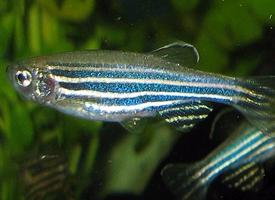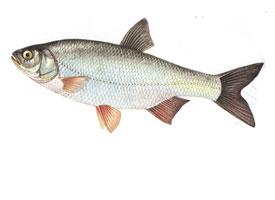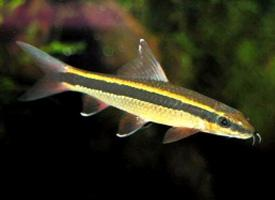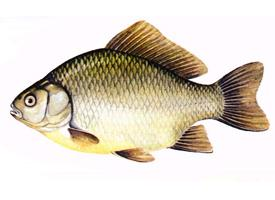
Popis zvířete
The Zebrafish (Brachydanio rerio), a small freshwater fish native to the streams of the southeastern Himalayan region, has gained prominence in both scientific research and the aquarium hobby. This species, which can reach up to 2.5 inches (6.4 cm) in length, is notable for its striking appearance and valuable contributions to biological research.Physically, the Zebrafish is most recognized for its vibrant horizontal stripes that run along the length of its body from gill to tail. These stripes are typically dark blue to black on a silvery translucent background, giving it a resemblance to a zebra's pattern, hence the name. The body of the Zebrafish is elongated with a laterally compressed shape, which aids in swift movements through water. Males and females can be distinguished by their body shape and color intensity, with males usually being slimmer and more brightly colored.
Zebrafish are adaptable creatures, thriving in a range of freshwater habitats. They prefer shallow, slow-moving waters, rich in vegetation. This preference is reflected in their diet, which is omnivorous, consisting of zooplankton, insects, and phytoplankton. In aquarium settings, they are known to be hardy and can adapt to various conditions, making them a popular choice for both novice and experienced aquarists.
The reproductive habits of Zebrafish are another area of interest. They are prolific breeders, with females capable of laying hundreds of eggs in a single spawning. These eggs are fertilized externally and develop rapidly. Under optimal conditions, the embryos are transparent, a characteristic that, combined with their rapid development, makes Zebrafish an invaluable model organism in developmental biology.
Scientifically, Zebrafish have become one of the most studied vertebrate model organisms. Their genetic, biological, and behavioral characteristics offer valuable insights into vertebrate development, genetics, and diseases. Researchers have successfully employed Zebrafish in studies of gene function, environmental toxicity, cancer, and neuroscience. Their genetic similarity to humans is surprisingly high, with over 70% of human genes having at least one Zebrafish counterpart. This makes them an excellent model for understanding human genetic diseases and potential drug development.
Zebrafish have a relatively short lifespan of around 2 to 3 years, which, coupled with their rapid reproductive rate and genetic tractability, allows for the study of multiple generations over a short period. This aspect is particularly beneficial for genetic and developmental studies, where observing the effects of genetic modifications across generations is essential.
In summary, the Zebrafish is a fascinating creature that occupies a significant place in both the natural world and scientific research. Its striking appearance and hardy nature make it a favorite among aquarium enthusiasts, while its biological and genetic attributes have established it as a cornerstone of modern biological research. As studies continue, the Zebrafish is sure to remain at the forefront of scientific discovery, shedding light on the complex processes that govern life itself.
Podobná zvířata
Nové fotografie zvířat
Top 10 zvířat
- Chinese water dragon (Physignathus cocincinus)
- Galápagos tortoise (Geochelone nigra complex)
- Dolphin gull (Leucophaeus scoresbii)
- Japanese macaque (Macaca fuscata)
- Colombian red howler (Alouatta seniculus)
- Sea urchins (Echinoidea)
- Moustached guenon (Cercopithecus cephus)
- Diana monkey (Cercopithecus diana)
- Common reed warbler (Acrocephalus scirpaceus)
- Common house mosquito (Culex pipiens)


